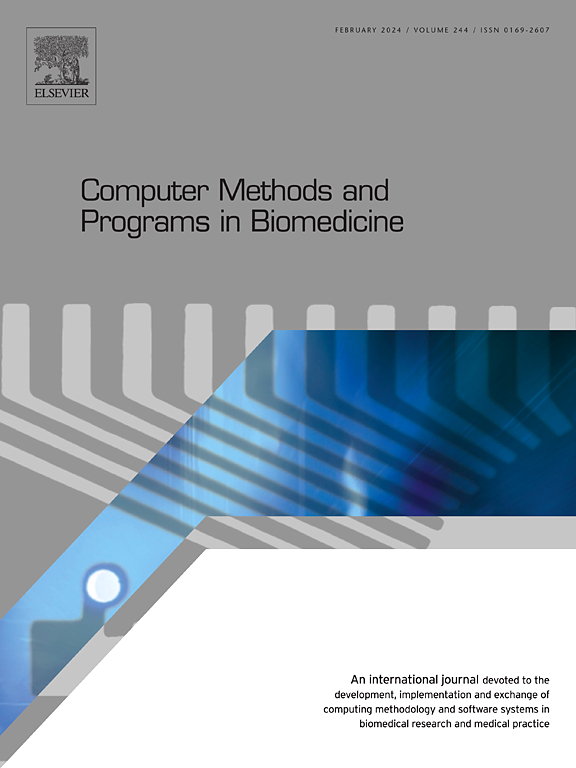DuDo-RAC: Dual-domain optimization for ring artifact correction in photon counting CT
IF 4.9
2区 医学
Q1 COMPUTER SCIENCE, INTERDISCIPLINARY APPLICATIONS
引用次数: 0
Abstract
Background and objective:
Due to the inconsistent response of photon counting detectors (PCDs) pixels to X-rays, there is an obvious presence of low-frequency ring artifacts in CT reconstructed images. Traditional CT ring artifact correction methods are ineffective in correcting low-frequency ring artifacts. Although the pixel-wise polynomial correction method can correct low-frequency ring artifacts, there may still remain residual artifacts due to the inaccuracy in the coefficient measurement and the inability of polynomial functions to perfectly model the relationship between the thickness and post-log raw data. To resolve such problems, this work proposes a high and low frequency ring artifact correction method based on dual-domain optimization (DuDo-RAC).
Methods:
This method is independent of spectral information and training data, making it suitable for various energy thresholds. Its principle is to model the inconsistent response as pixel-wise polynomial functions, with the coefficients for each pixel being determined via a dual-domain optimization framework. Since ring artifacts manifest as stripes after polar transformations, smoothing operations are utilized to further weaken the residual ring artifacts after the pre-correction process. Furthermore, a multi-resolution gradient loss function is designed to iteratively optimize the polynomial correction coefficients for a better assessment of ring removal performance.
Results:
The results have demonstrated that the proposed method can effectively correct the high and low frequency ring artifacts in PCD-CT images while preserving the image structure and details.
Conclusion:
DuDo-RAC proposed in this study obtains effective ring artifact correction results in PCD-CT images.
求助全文
约1分钟内获得全文
求助全文
来源期刊

Computer methods and programs in biomedicine
工程技术-工程:生物医学
CiteScore
12.30
自引率
6.60%
发文量
601
审稿时长
135 days
期刊介绍:
To encourage the development of formal computing methods, and their application in biomedical research and medical practice, by illustration of fundamental principles in biomedical informatics research; to stimulate basic research into application software design; to report the state of research of biomedical information processing projects; to report new computer methodologies applied in biomedical areas; the eventual distribution of demonstrable software to avoid duplication of effort; to provide a forum for discussion and improvement of existing software; to optimize contact between national organizations and regional user groups by promoting an international exchange of information on formal methods, standards and software in biomedicine.
Computer Methods and Programs in Biomedicine covers computing methodology and software systems derived from computing science for implementation in all aspects of biomedical research and medical practice. It is designed to serve: biochemists; biologists; geneticists; immunologists; neuroscientists; pharmacologists; toxicologists; clinicians; epidemiologists; psychiatrists; psychologists; cardiologists; chemists; (radio)physicists; computer scientists; programmers and systems analysts; biomedical, clinical, electrical and other engineers; teachers of medical informatics and users of educational software.
 求助内容:
求助内容: 应助结果提醒方式:
应助结果提醒方式:


